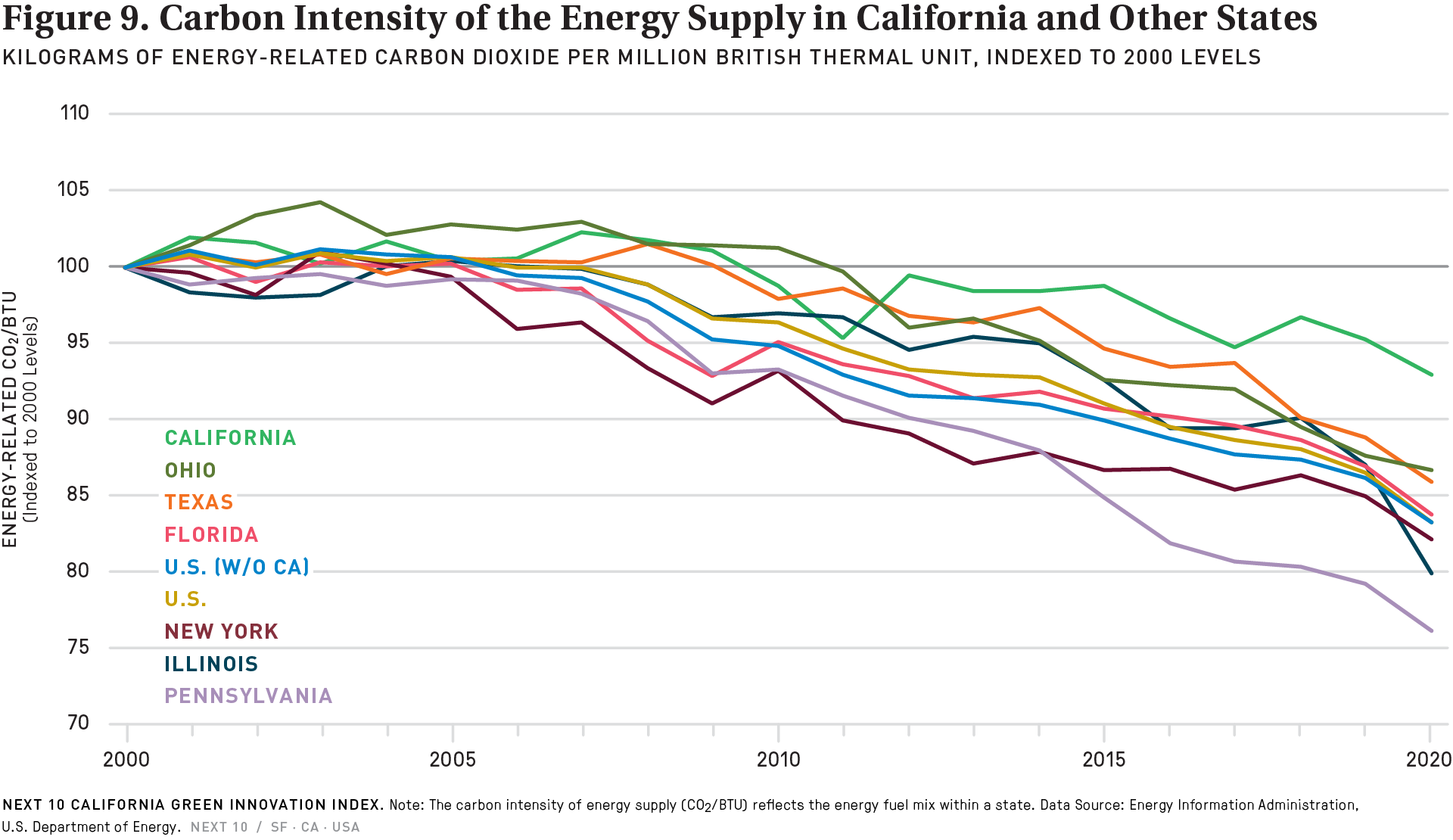Challenge
- Following the previous year’s decreases, the carbon intensity of California’s energy supply (CO2 relative to British thermal unit) declined 2.5 percent in 2020, the second-lowest reduction behind Ohio (-1.1%). Over time, as California has moved away from natural gas and toward more renewables, the state’s remaining fossil fuel consumption mix (coal, petroleum, and natural gas) shifted slightly toward more petroleum (less polluting than coal but more polluting than natural gas) for transportation purposes and less natural gas. Petroleum refining and hydrogen production declined by 10.4 percent in 2020. As a result of these shifting energy source trends, energy supply carbon intensity decreased slightly in California (-7.1%) compared to the rest of the nation (-16.74%) from 2000 to 2020. Petroleum is the main source of emissions from fuel, which underscores California’s need to reduce emissions from transportation. As zero-emission vehicles (ZEVs) become more commonplace, the transportation sector should become increasingly electrified and the state should move away from fossil fuels as a significant source of emissions.
More About the
Carbon Economy
Related Content

